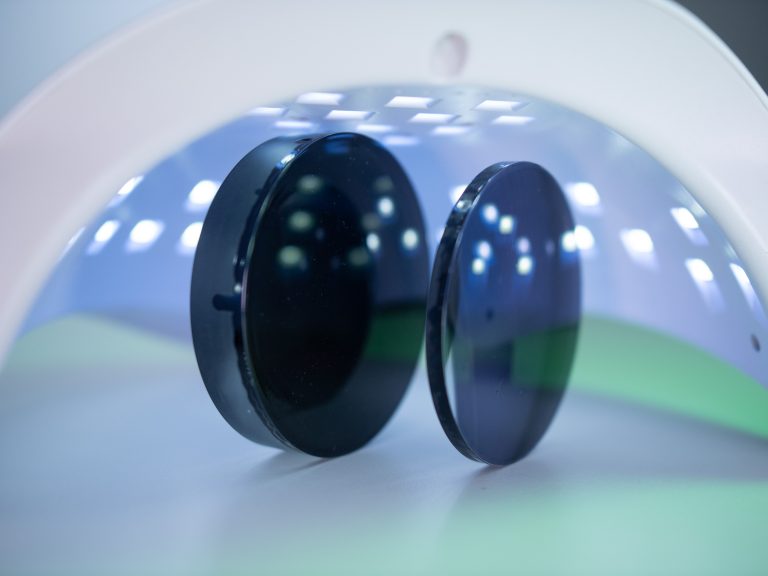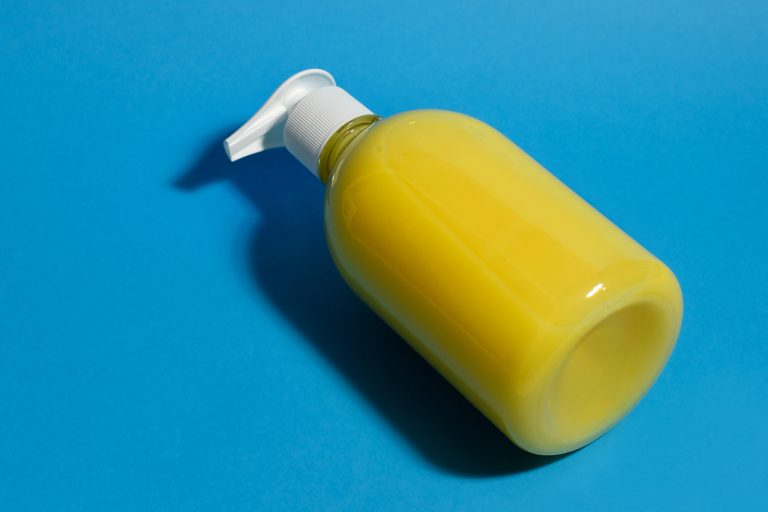Nuance Audio: What you see is what you hear

EssilorLuxottica launches first hearing aid glasses
According to the World Health Organization (WHO), one in four people worldwide is expected to have hearing problems by 2050. At the same time, the undersupply in the hearing aid market is serious. One reason for this is that hearing systems are often associated with a lot of stigmatization. For example: “Anyone who wears hearing aids is old”. Even though this prejudice is far from reality. Therefore, the industry giant EssilorLuxottica now wants to address this issue in a special way: The company’s first hearing aid glasses will be launched on the market in fall 2024, The group is thus entering completely new territory in the hearing acoustics industry. In this article you will find out more about the opportunities and special features of the new technology and differences compared to traditional hearing aids.
Nuance Audio is the name of the new smart glasses with audio components like microphones and speakers that are to be launched on the US market in the second half of 2024. After that, they also will come to Europe.
Already in summer 2023, EssilorLuxottica announced that it had acquired 100% of the Israeli start-up Nuance and was now working on hearing aid glasses with an audio team and in-house research and development.
Hearing aid glasses themselves are not necessarily anything new. The first hearing aid glasses already existed in the 1950s. What is new, however, is that the world’s largest ophthalmic optics group by far is now entering this market. What was previously a niche product could therefore gain a whole new reputation.
This step is particularly exciting as there is a large global gap in the provision of hearing aids, which varies significantly from country to country. Unfortunately, precise data on this is often lacking but EssilorLuxottica itself assumes that there is a global coverage gap of 83%.

An invisible hearing solution
In February, at the Mido trade fair, MAFO editors had the chance to test the new hearing glasses live, even before the official launch. “We are talking about glasses with an invisible integrated hearing solution,” explained Stefano Genco, Global Head of Super Audio and Nuance Audio, at the EssilorLuxottica booth.
And indeed, the frame does look very similar to a standard acetate frame. The technology, such as various microphones and two loudspeakers near the ears, is invisibly built into the temples. Individual power lenses can be fitted as usual by any standard lens manufacturer.
Nuance Audio comes with a wireless charging pad for easy recharging. It takes around 2.5 hours to charge fully and the estimated battery life is around eight hours of typical usage in a noisy environment.
The hearing aid glasses are available on the market in two colors, with two different temple lengths and in three sizes (48, 54 and 56). “The biggest one is specially addressed to the US market, where we will launch Nuance Audio first,” explained Genco.
The technology and how it works
For the user, the hearing aid glasses work very simply. Various microphones in the glasses record the sound. The speech of the person opposite is then amplified and emitted via speakers on the temples, near the ears. The glasses are put on and are ready for use in less than a minute. The surrounding sounds are analyzed within 30 seconds and the user’s voice for a further 30 seconds; during which time the user must speak.
Several algorithms auto-configure the entire system so that the individual amplification is adapted to the ambient noise. The longer the glasses are worn, the more the user adapts to this way of hearing.
“So what we are saying is: What you see is what you hear. This is the perfect combination between vision and hearing,“ said Genco. This means that in particular those sounds that hit the microphones of the glasses from the front are amplified.
As people are usually looking directly at the person they are speaking to, the other person’s speech is amplified and the “distracting” background noise is reduced.
“The more you are surrounded by noise, the more these glasses will help you to focus on what your target is saying. And this is precisely what someone with mild hearing loss wants to have during their conversation with friends or during their cocktail party,” explained Genco. The amplification in decibels can then be changed individually by the user via the mobile app. This means that conversation partners or even the user’s own voice can be made louder or quieter.

The hearing glasses put to the test
But now it is time for testing. The optical trade fair is the perfect test environment because it is loud and crowded everywhere. Even for people with mild hearing loss, it can be difficult to understand speech properly in such an environment.
The glasses feel similar to other plastic glasses and they are quickly ready to go. Since I personally still hear very well, I notice the amplification but no substantial hearing advantage at the trade fair.
It is a completely different story for my colleague: She belongs to the exact target group that the company wants to address. She is 51 years old and has often suspected that she has a slight hearing loss, but has never visited an ear specialist or audiologist.
And indeed ‒ the ah-ha effect is there. My colleague understands our interview partner Stefano Genco much better than before and is delighted.
“On average worldwide, the customers of traditional hearing solution are around 75 years old. However, people start having hearing loss often when they are 50 or 55, but they refuse any kind of solution, because of different reasons, such as the stigma, the discomfort and the price,“ explained Genco.
The hearing aid glasses avoid the problem of traditional hearing aids. There is no stigmatization because the glasses look fashionable and especially because they can be tried out without prior hearing tests, visits to the doctor, etc.
However, there are major technical differences compared to hearing aids. To understand them, someone needs to understand how other devices work.
The hearing curve
Just as people’s visual acuity is highly individual, the hearing curve of people with hearing loss is also highly individual. For this reason, a sound audiogram is always recorded when a traditional hearing aid is fitted. Each hearing system fitted by the hearing care professional is adjusted precisely to this individual hearing curve of the respective customer.
An individual fitting as such is not yet possible for EssilorLuxottica’s smart glasses, the company is taking a different approach by classifying hearing curves.
According to the company, the hearing aid glasses are suitable for mild to moderate hearing losses ‒ i.e. not for profound hearing losses. These mild to moderate hearing losses can be roughly classified in a certain way. The company defined three “scenarios”.
According to the company’s studies, these three scenarios or hearing curves cover more than 90% of mild to moderate hearing losses relatively well. This means that there is only a small proportion of people with hearing loss for whom the hearing curve does not match their hearing loss at all.
Glasses versus hearing aids
For “non-hearing aid acousticians”, it may be easy to think that the new hearing aid glasses can replace a hearing aid. However, this is not the case. At present, the smart glasses are not technically comparable with individually fitted hearing aids.
Because these are adapted to the individual hearing curve of hearing impaired people, the loudspeakers are placed in the ear canal for better intelligibility and, at least with high-end hearing systems, there are countless more technical features that optimize hearing.
And just as good vision with glasses is generally only possible on the basis of the right refraction, perfect hearing also requires a hearing test by an expert and a corresponding individual fitting.
An interesting barrier-free entry
But hearing aid glasses can be a very interesting introduction to the world of hearing aids for other reasons: They address two needs with one single device. The glasses can offer a first barrier-free entry for people with mild to moderate hearing loss. They amplify the other person’s voice, provided they are being looked at, and reduce distracting background noise.
The inhibition threshold to try out a real hearing aid is removed. The technology is therefore a good first step towards counteracting the serious underuse in hearing impaired people. Thanks to EssilorLuxottica’s distribution, the glasses have the potential to reach many people around the world who might otherwise never come into contact with hearing aids, or would do so far too late.
It is therefore a very exciting solution also for young, technically inclined people who would otherwise be reluctant to wear a hearing aid.
It helps to introduce more people to the world of good hearing and perhaps also to arouse enthusiasm for other hearing aids, which nowadays offer an incredible number of technical possibilities and are often so small that they disappear almost invisibly behind the hair and are not even noticed by the other person.
The launch
The first launch of the glasses will take place in the fall in the USA. The glasses can be purchased without a medical prescription, but the company is working to allow partial refunds even if it is too early to comment at this stage.
There are different requirements for this in each country. For reimbursement in some countries the glasses would have to be able to be adapted to the wearer’s individual hearing curve, something the company is working on. The technology will therefore become even more attractive over time. However, there are many more requirements and they differ from country to country.
Due to the special technology, Nuance Audio will not be cheap so that partial reimbursement by health insurance companies would probably make the product attractive to a large proportion of the population. This is also the situation with hearing aids, as the sophisticated technology of those products has its price.
Ultimate goal: destigmatization
In any case, the official launch of the hearing aid glasses is eagerly awaited. This is also because EssilorLuxottica’s vertical structure means that various optical retailers are now also part of the group and EssilorLuxottica is not only the manufacturer and supplier of the hearing glasses, but also the “seller”.
It will also be interesting to see how the hearing aid glasses will develop technically and how the version that is ultimately launched in Europe will be equipped.
A destigmatization of hearing aids and hearing loss would be desirable in any case. After all, hearing can be “unlearned” in comparison to sight. It is therefore highly recommended that hearing aids are fitted as early as possible, when the hearing loss is still mild or moderate, so that the brain is able to process the acoustic information correctly. Thus, if hearing aid glasses help to destigmatize hearing loss, a significant step has already been taken.








